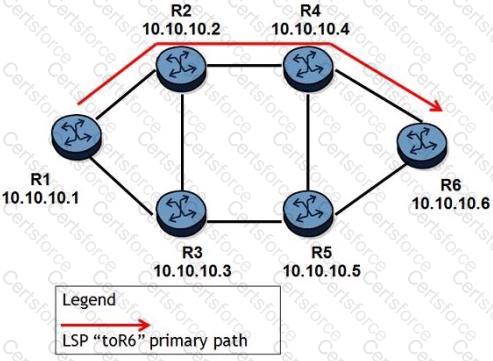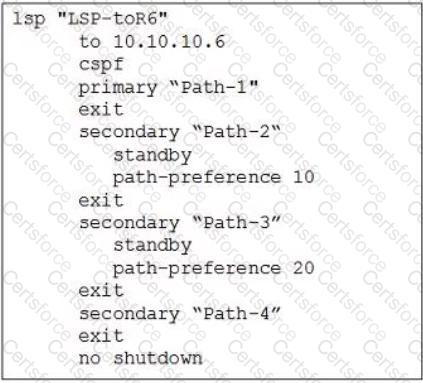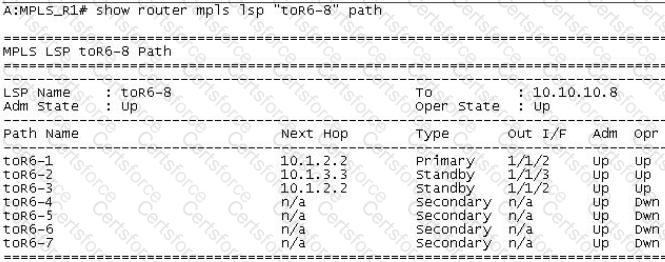What command syntax would be used to create a new IES service with a service id of 5 and a customer id of 1000?
Click on the exhibit.

An LSP traverses the path R1-R2-R3-R6 and facility fast reroute is enabled. If the protected LSP carries one transport label and one service label, how many labels will be on the bypass tunnel if router R2 fails?
A service can be either local or distributed.
Click on the exhibit.

Which of the following CANNOT be used to ensure the LSP toR6" will follow the path R1-R2-R4-R6?
Which of the following statements are TRUE regarding a fully meshed VPLS service with a default setting? (Choose 3)
An Alcatel-Lucent 7750 SR enabled with LDP has multiple equal cost paths to a given FEC. After ECMP is enabled, which of the following is FALSE?
If an Alcatel-Lucent 7750 SR is an iLER operating in pipe mode, which of the following regarding the TC field (EXP bits) is TRUE?
Click on the exhibit.

What is the possible reason that the label for prefix 192.10.1.2/32 is not active?
Click on the exhibit.

The LSP "toR6" is configured with a fully strict path on an Alcatel-Lucent 7750 SR. Which of the following configurations is required to enable fast reroute for this LSP?
Which of the following about RSVP-TE is TRUE?
Click on the exhibit.

Both Path-1 and Path-2 are down. If Path-2 becomes available again, how does the headend router select the secondary LSP path?
How many SAPs can be configured on a port configured with NULL encapsulation?
Click on the exhibit.

If the primary path fails, which backup LSP path will the head-end router pick first?
Which of the following most accurately describes the default behavior of a VPLS regarding the handling of a tagged frame at the ingress of SAP 1/1/1:100?
Which of the following statements is NOT a valid reason to use MP-BGP as a routing protocol to transport VPRN routes?
Which of the following about label modes on the Alcatel-Lucent 7750 SR is FALSE?
Which of the following is NOT a service offered on the Alcatel-Lucent 7750 SR?
Which of the following best describes a VPWS?
Click on the exhibit button below.

Is a routing policy required on PE1 to advertise a CE1's system interface to PE2?
Click on the exhibit.

After the Isp-ping command is executed, which of the following best describe the router's action?